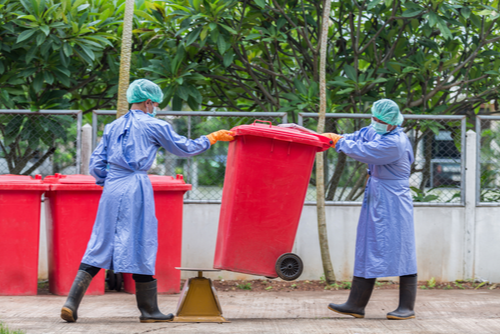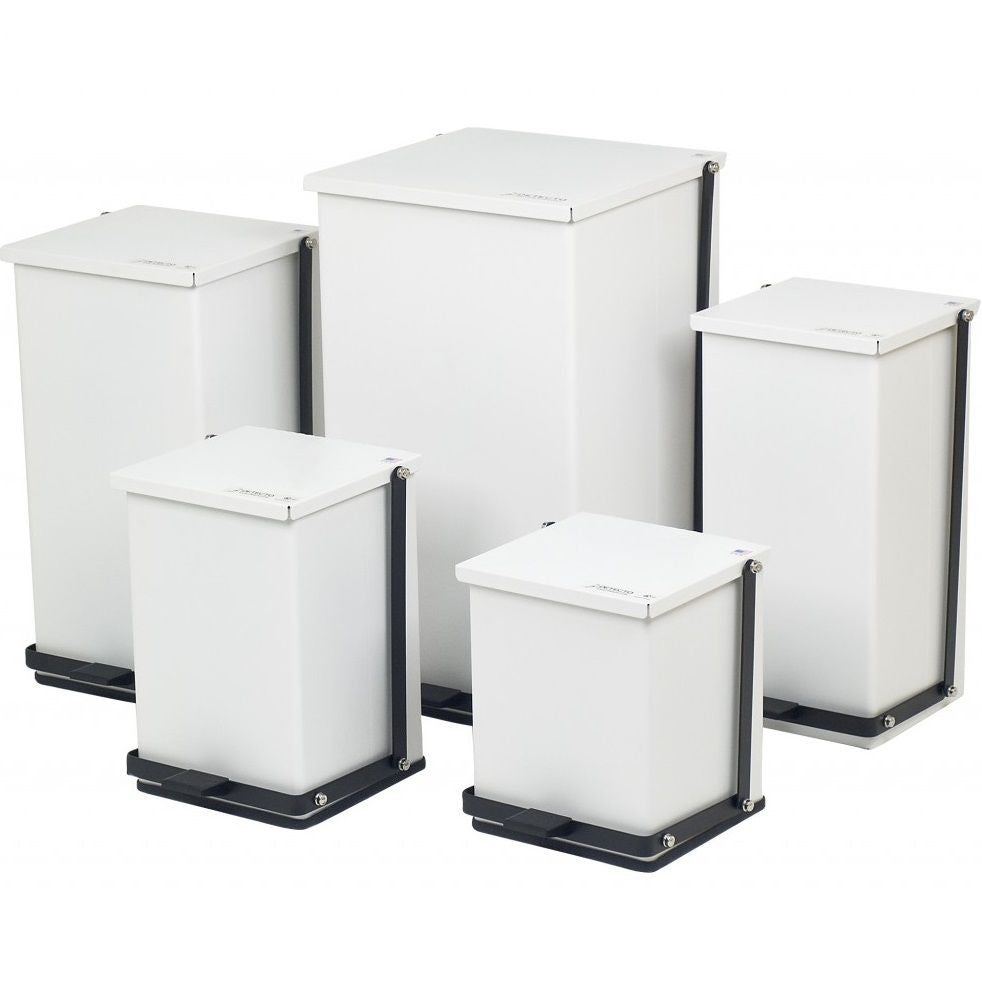Guardians of Cleanliness: Local Medical Waste Removal Service for Your Assurance
Guardians of Cleanliness: Local Medical Waste Removal Service for Your Assurance
Blog Article
Minimize Costs and Optimize Security: Effective Medical Garbage Disposal Methods
Efficient medical waste disposal strategies are essential for healthcare centers to maximize and decrease prices security. With the growing concern for ecological sustainability and the raising variety of policies surrounding waste monitoring, it is imperative for medical care companies to adopt efficient and certified techniques. By applying appropriate segregation and classification, effective packaging and labeling, secure transport and handling, effective therapy and disposal approaches, and compliance with governing guidelines, healthcare centers can guarantee the responsible and risk-free management of clinical waste. In this discussion, we will certainly explore each of these approaches carefully, providing understandings and practical ideas for healthcare specialists to optimize their garbage disposal processes.

Appropriate Segregation and Categorization
Appropriate partition and classification are crucial elements of efficient clinical garbage disposal approaches, ensuring the safety of health care workers, the public, and the atmosphere - medical waste removal services. medical waste disposal services with WasteX. By separating different sorts of clinical waste at the point of generation, healthcare centers can reduce the risk of cross-contamination and possible damage to individuals and ecosystems
One of the crucial consider proper partition is the identification and category of clinical waste. This includes classifying waste into various groups, such as infectious, dangerous, contaminated, or pharmaceutical waste. Each classification calls for certain handling, storage, and disposal approaches to avoid any kind of unfavorable results on human health and wellness and the setting.
Moreover, correct partition likewise consists of the use of color-coded containers and tags to plainly recognize and distinguish the numerous kinds of clinical waste. This aids healthcare employees and waste management workers to conveniently recognize and manage the waste suitably. Red containers may be utilized for transmittable waste, while yellow containers might be designated for harmful waste.
In enhancement to partition, proper classification also includes the appropriate packaging and containment of clinical waste. This guarantees that waste is securely stored and moved without positioning any type of dangers to people or the setting. Making use of leak-proof and puncture-resistant containers, in addition to appropriately securing and classifying them, aids to avoid any unintentional exposure or release of dangerous compounds.
Efficient Product Packaging and Classifying
Efficient product packaging and labeling play a critical function in making certain the effective and safe disposal of clinical waste. Correct product packaging is essential to prevent leak, damage, or splilling throughout transportation and handling. It helps to reduce the risk of contamination and protects medical care employees, waste monitoring workers, and the atmosphere from potential hazards.
Clinical waste needs to be packaged in leak-proof and sturdy containers that are immune to pierce and breakage. These containers should be effectively secured to avoid any leakage. In addition, the packaging should have the ability to hold up against the conditions of transportation, including temperature level variants and rough handling.
Identifying is similarly important as it gives vital info about the components of the waste and any possible threats related to it. The labels need to include the name of the healthcare center, the sort of waste, and any kind of special handling guidelines. Standard and clear labeling guarantees that waste monitoring workers can conveniently determine and take care of the waste properly.
Reliable packaging and labeling additionally aid in the appropriate segregation and categorization of clinical waste. Clear labeling enables simple identification of different waste streams, such as transmittable waste, sharps, or pharmaceutical waste. This helps in enhancing the disposal process and making sure that the waste is dealt with or gotten rid of in accordance with regulative standards.
Safe Transportation and Handling
Guaranteeing the secure transport and handling of medical waste is of utmost value in order to prevent any type of prospective wellness and environmental dangers. Clinical waste, such as sharps, infected products, and pharmaceutical waste, must be appropriately packaged and taken care of to minimize the risk of exposure to dangerous materials and pathogens.
Carrying clinical waste calls for conformity with rigorous regulations and guidelines set by ecological firms and neighborhood authorities. These laws intend to protect the health and wellness of workers associated with waste administration and stop the launch of harmful products right into the setting.
To make certain risk-free transportation, clinical waste needs to be put in puncture-resistant and watertight containers that are appropriately sealed and classified. In addition, it is important to use specialized cars equipped with suitable safety attributes to move clinical waste. medical waste disposal services with WasteX.
Dealing with medical waste additionally requires appropriate training and adherence to safety and security protocols. Personnel associated with the handling of clinical waste should wear proper individual safety equipment (PPE) such as gowns, masks, and gloves to reduce the danger of direct exposure. They need to additionally follow strict hygiene practices to avoid the spread of infections and make sure the secure disposal of waste.
Reliable Therapy and Disposal Approaches
Implementing appropriate treatment and disposal methods is crucial in managing medical waste hop over to these guys effectively and reducing potential health and environmental risks. Medical waste, which includes sharps, infectious products, chemicals, and drugs, can posture substantial dangers otherwise dealt with and taken care of effectively. There are a number of treatment and disposal methods available that stick to why not try this out governing standards and promote safe techniques.
One common method is incineration, which involves shedding the waste at heats. Incineration works in ruining virus and lowering the quantity of waste, yet it can launch harmful pollutants into the air if not correctly managed. As a result, it is crucial to make use of modern-day burners furnished with emission control innovations.
Another method is autoclaving, which makes use of vapor and stress to sanitize the waste. Autoclaving works in killing virus and lowering the quantity of waste, however it requires mindful surveillance and maintenance to guarantee proper performance. The disinfected waste can then be safely disposed of in a land fill.
Chemical treatment is another alternative, which includes using anti-bacterials or various other chemicals to neutralize virus. This technique is typically made use of for liquid waste, such as laboratory samplings. It is essential to utilize appropriate chemicals and comply with proper procedures to ensure efficient therapy and avoid ecological contamination.

Conformity With Regulatory Guidelines
Abiding by governing guidelines is crucial in making sure correct compliance with medical garbage disposal techniques. These guidelines are established to safeguard public wellness, prevent environmental contamination, and keep workplace security. Conformity with governing guidelines is important for medical care centers, as non-compliance can result in charges, penalties, and reputational damages.
Regulatory guidelines outline the proper handling, storage, transport, and disposal of clinical waste. These standards additionally resolve the partition of visit this web-site various waste streams, such as sharps, contagious waste, and pharmaceutical waste.
To preserve compliance, health care facilities should establish comprehensive waste monitoring programs that consist of team training, routine audits, and continuous tracking. It is necessary to keep up-to-date with any adjustments or updates to regulative guidelines, as practices might advance gradually. By staying informed and implementing correct procedures, health care facilities can lower the capacity for regulative violations and shield the health and wellness of their staff, individuals, and the surrounding community.
Verdict
To conclude, executing effective clinical garbage disposal techniques is important for minimizing prices and making best use of security. Proper segregation and classification, reliable packaging and labeling, secure transport and handling, and reliable treatment and disposal approaches are essential actions to make certain conformity with governing standards. medical waste removal service. By adhering to these techniques, health care centers can safeguard the setting and public health while additionally reducing monetary worries connected with clinical waste monitoring
By executing correct partition and categorization, effective product packaging and labeling, safe transportation and handling, efficient therapy and disposal approaches, and compliance with governing standards, medical care centers can make certain the safe and responsible monitoring of clinical waste. Red containers might be made use of for transmittable waste, while yellow containers might be assigned for harmful waste.
Standardized and clear labeling guarantees that waste administration personnel can conveniently recognize and handle the waste suitably. (medical waste disposal services with WasteX)
Clear labeling allows for very easy recognition of different waste streams, such as infectious waste, sharps, or pharmaceutical waste. These standards likewise deal with the segregation of various waste streams, such as sharps, transmittable waste, and pharmaceutical waste.
Report this page